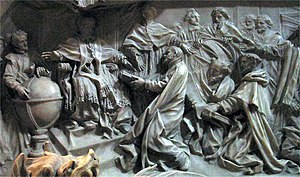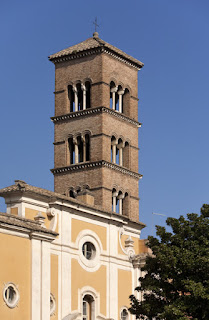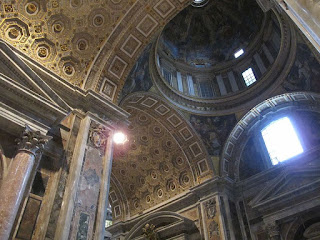NEW - Caesar crosses the Rubicon
Act of defiance that started a civil war and coined a phrase
The Roman general Julius Caesar led his army across the Rubicon river in northern Italy in an act of military defiance that would plunge the Roman Republic into civil war on this day in 49BC. The course of the Rubicon, which can still be found on maps of Italy today, entering the Adriatic between Ravenna and Rimini in northeast Italy, represented the border between the Roman province of Cisalpine Gaul, over which Caesar had command, and what was by then known as Italia, the area of the peninsula south of the Alps directly governed by Rome. One of the most powerful politicians in the Roman Republic after forming an alliance with Pompey and Crassus known as the First Triumvirate, Caesar had spent much of the previous decade expanding his territory through the Gallic Wars, taking control of much of modern-day France and northern Italy and extending the borders of the Republic as far as the Rhine. He was the first Roman general to invade Britain. The troops under his command - the 13th Legion - numbered more than 20,000 men who had seen Caesar’s military skills develop and were fiercely loyal. Read more...
_________________________________________________________________
Pina Menichelli – silent movie star
Screen diva who enjoyed worldwide fame
The actress Pina Menichelli, who became one of the most celebrated female stars of the silent movie era, was born on this day in 1890 in Castroreale, a village in northeast Sicily. Menichelli’s career was brief – she retired at the age of just 34 – but in her last eight or nine years on screen she enjoyed such popularity that her films played to packed houses and she commanded a salary that was the equivalent of millions of euros in today’s money. Without words, actors had to use facial expressions and body movements to create character in the parts they were playing and Menichelli, a naturally beautiful woman, exploited her elegance and sensuality to the full, at times pushing the limits of what was acceptable on screen. In fact, one of her films, La Moglie di Claudio (Claudio’s Wife) was banned by the censors for fear it would offend sensitivities, particularly those of the Catholic Church. Generally cast in the role of femme fatale, Menichelli thus became something of a sex symbol in the years after the First World War and there was considerable shock when she announced abruptly in 1924 that she was quitting the film industry for good. Read more…
________________________________________________________________
Maurizio Sarri - football manager
Juventus coach is 61 today
The football coach Maurizio Sarri - currently coach of Juventus, having previously been in charge of Chelsea in the English Premier League - was born on this day in 1959 in Naples. Sarri, who has an unusual background for a professional football coach in that he spent more than 20 years in banking before devoting himself to the game full-time, took over as Chelsea manager in the summer of 2017, succeeding another Italian, Antonio Conte. Previously, he had spent three seasons as head coach at SSC Napoli, twice finishing second and once third in Serie A. He never played professionally, yet he has now held coaching positions at 20 different clubs. Sarri was born in the Bagnoli district of Naples, where his father, Amerigo, a former professional cyclist, worked in the sprawling but now derelict Italsider steel plant. It was not long, however, before the family moved away, however, first to Castro, a village on the shore of Lago d’Iseo, near Bergamo, and then to Figline Valdarno, in Tuscany, his father’s birthplace. It was there that Sarri grew up and played football for the local amateur team. A centre half, he had trials with Torino and Fiorentina but was deemed not quite good enough for the professional game. Read more…
__________________________________________________________________
San Pietro Orseolo – Doge of Venice and monk
Rich powerful Doge made a life-changing decision
Pietro Orseolo, a former Venetian Doge who joined the Benedictine order, died on this day in 987. He was canonised by Pope Clement XII in 1731 and his feast day is celebrated on the anniversary of his death on 10 January each year. Pietro Orseolo became Doge of Venice in 976 but after just two years in office he left his palace in the middle of the night to go to France to become a monk. Orseolo was originally from a powerful family in Udine and at the age of 20 became commander of the Venetian fleet waging successful campaigns against pirate ships. He was elected Doge after the previous ruler of Venice had been killed in a revolt. Orseolo restored order to the city, built much needed hospitals and cared for widows and orphans. He started to rebuild the Doge’s palace and St Mark’s Basilica using his own money. But he suddenly left Venice to travel to southern France with three other Venetians to join a Benedictine abbey. It is believed he told no one about his decision in advance, not even his wife and family. After some years living as a monk performing menial tasks at the abbey, Orseolo went to live in the surrounding forest as a hermit. Read more…
_________________________________________________________________
Flaminio Bertoni - sculptor and car designer
Visionary ideas turned Citroën into style icon
The sculptor and automobile designer Flaminio Bertoni, the creative genius behind the groundbreaking Citroën cars of the 1930s, 40s and 50s, was born on this day in 1903 in what is now the Masnago district of Varese. Bertoni, who lived in or near Paris from 1931 until his death in 1964, designed bodies for the stylish Traction Avant luxury executive car and the enduring workhorse 'Deux Chevaux' - the 2CV - which became almost a symbol of France. Yes both of these were eclipsed, some would say, by the brilliance of Bertoni's aerodynamic, futuristic Citroën DS - also known as 'the Goddess' - which was named the most beautiful car of all time by the magazine Classic and Sports Car and was described by the Chicago Institute of Design soon after its launch as among the '100 most beautiful things in the world'. Bertoni was fêted in France, where he was made a Knight of Arts and Letters by the government of Charles de Gaulle in 1961 but it was not until almost 40 years after his death that his achievements were given recognition in his home country, where his son, Leonardo, set up a museum in Varese to celebrate his work. Read more…
Home



























